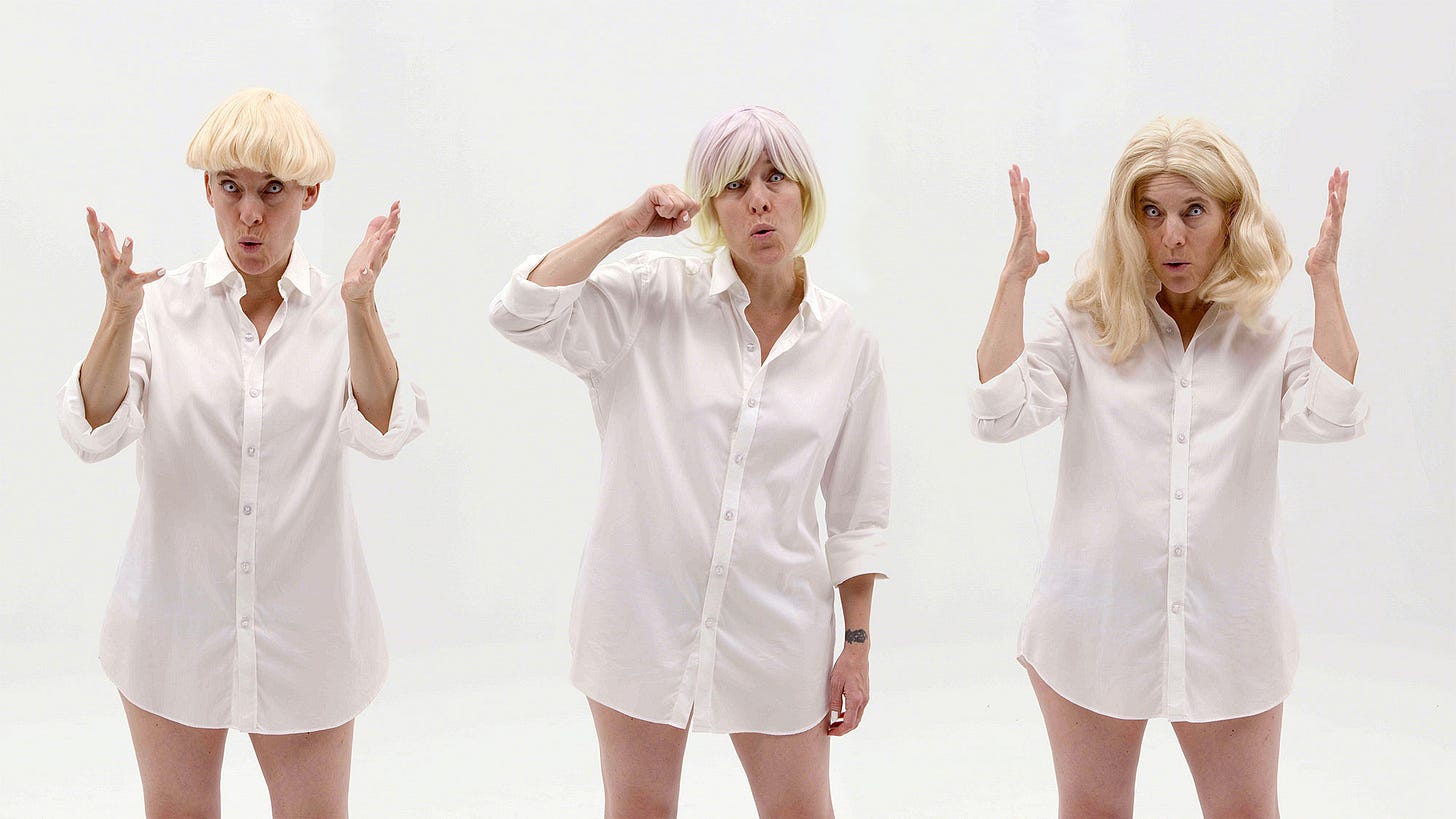The final boss Karen: Candice Breitz drags white fragility at Fotografiska Berlin
In a place where I expected nothing but aesthetic picture spots, I came across an exhibition that actually has something to offer: Let's talk about race, politics online, and cultural practices.
Setting the scene
If a kid ever asked me what gentrification was (considering the low likelihood of this ever happening), I’d simply take them to the new Fotografiska location in Berlin Mitte: Fotografiska, just like IKEA, is an import from Sweden. It’s a contemporary photography museum founded in Stockholm in 2010 that later expanded to Tallinn, New York, and, most recently, Berlin.
Returning to that imaginary kid’s question, you basically need three things for gentrification:
1) A struggling neighborhood, preferably a subculture (bonus point if that community exists in an environment it’s not welcome in).
2) People with cash spotting more cash where there is no cash, aka use cheap land in that neighborhood to build fancy stuff to attract fancy people that will enjoy fancy stuff and bring more cash (bonus point if you use the existing culture as an attraction for said fancy people).
3) The people who created their neighborhood in the first place can’t compete with the cash of fancy people anymore and have to leave.
Congrats, you just successfully gentrified a community!
This is the story of Berlin’s Kunsthaus Tacheles, an alternative melting pot of art and culture that emerged during the 90’s and took refuge in an abandoned shopping mall. Artist communities, theaters, clubs, and bars settled inside the rotting building building a space for the creativity that was constantly left behind in DDR city politics. Unfortunately, nothing screams louder than money and a spot right in the heart of a big city is just itching to be gentrified. So in 2012, the former mall was forcibly evicted to make space for investors. Finally, Fotografiska moved in this September, along with new hip shops, new artsy restaurants, and new housing units your sold kidney probably wouldn’t cover. The traces of 30 years full of alternative art scenes and subcultures that once inhabited the former shopping mall have become nothing but aesthetic decorations along the stairways of the five-level high museum. Given all the in-your-face Instagramability of this place, I was quite surprised to come across an actually good exhibition.
An absurd comedy of opinions
The exhibition Whiteface is made up of video works and photographs. Candice Breitz (Gen X, South African) appears in nothing but a white button-down wearing uncanny husky blue contact lenses and yellowish wigs against a clean white background. The 3/4 portraits of dressed-up Candice remind me of the Founding Fathers, serene faces gazing into the distance, looking out for what to colonize next. In the videos, the characters of this comical play lip-sync snippets of online and TV debates on race and racism. The source of these statements is in every case a white person. The topics range from statistics forecasting white Americans to become the numeric minority in the States to passionate proclamations of white pride to denial of white privilege to self-soothing encouragement: It’s okay to be white! Latter affirmations make up White Mantras (2022), seven screens with Candice’s life-sized characters repeating phrases in a loop.

Candice’s interpretation of these phrases is expressive to the point of mimicking TikTok lip-sync challenges. A very fitting choice, considering how political debates have infested this platform that is so low on reliable information and yet so high on engagement rates.
Candice pulls the sentences out of their context, using the same strategies of fake news and “cancel culture”. Looking at her characters, it’s impossible to confidently guess their position: Are they being deadass? Are they being sarcastic? Are they choleric Trump supporters or insecure liberals who crave to be praised for not being racist? You can compare your guess with a tiny screen on the opposite wall showing the videos Candice picked the phrases from (if you read my Agnieszka Polska review, you already know that I’m a huge fan of an opposite-screen situation).
Dressing the part
Candice makes some intriguing costume choices. The white shirt is not only a tool to exaggerate white color visually. The white button-down is synonymous with hard work and professionalism. It’s what politicians love being photographed in, especially with the sleeves rolled up that scream Look at me! I’m a good pal just like you, I’m a team player, you can trust me!

Another detail that caught my attention is the wig. Wigs are common among Black American women to the point that they are made fun of in movies and pop culture. That is also why the Kardashians got so much backlash as they are known for hopping on trends based on People of Color.
And that’s how Candice draws the circle back to the title: Whiteface. Candice ridicules whiteness and more specifically white people who can’t handle being held accountable for anything. With the lifeless blue eyes staring back, her figures become similar to the bloodthirsty folks from Get Out (2017) who act all nice on the outside waiting for a chance to take over a Black body for eternal youth. Exaggerating whiteness to absolute absurdity, she plays with the horrendous practice of Blackface: White performers dressing up as caricatures of Black people to claim that they are nothing more than that.

The thing about being white…
Candice deals with whiteness knowing that she, too, is part of the chaos. Having grown up in Apartheid South Africa, she experienced the privileged status of a white woman in an environment where hierarchies were even more obvious and openly kept up than in the US. In between the wigged figures, she appears with her natural short Ellen DeGeneres-type haircut, playing not a character but her own white self.
This work is not about white saviorism: It’s not about reassuring white people, it’s not about the artist praising herself. Whiteface makes two points. The first is that white people debating race center themselves as supposed victims instead of giving space to those who actually suffer from the daily consequences of white supremacy. Anyone who gets offended over this work can line up in the queue of people who are part of the problem. The second point is something that I understand as a question: How can we bridge the problem of whiteness as a made-up worldview with its very real consequences lasting for centuries until this very day? How can white people understand their own role in an infrastructure that is invisible to them but restraining everyone else?
Do you too want to speak to the manager? Candice Breitz: Whiteface helps you unleash your inner Karen until December 4, 2023, at Fotografiska Berlin.
Fotografiska
Oranienburger Strasse 54
10117 Berlin-Mitte
Open every day from 10 am until 11 pm
Admission varying
Website
If you had fun with this review, I’d really appreciate you letting me know through a like, a comment, or maybe even a referral. Thank you for being part of this!
See you soon!!!
Jennifer
The Gen Z Art Critic





